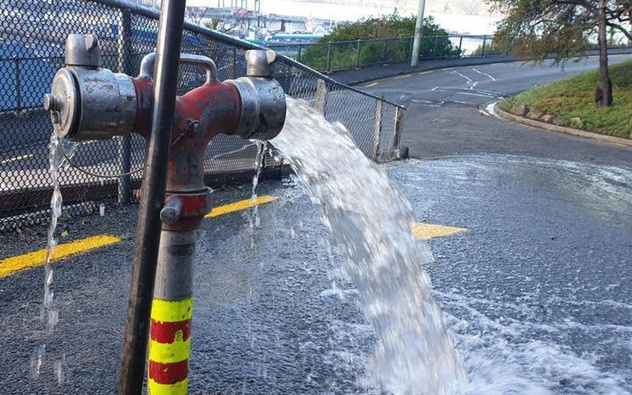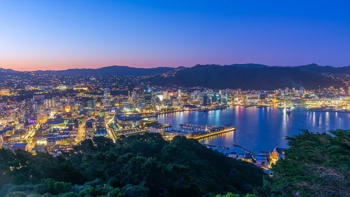Follow
the podcast on

Asbestos fibres are leaching into Christchurch's drinking water supply from ageing underground pipes, according to a University of Otago study.
While the researchers say there is no immediate cause for public health concern, the discovery has prompted calls for better monitoring of asbestos in drinking water to help councils prioritise which pipes to replace.
The researchers sent drinking water samples from asbestos cement pipes in 35 places across the city, targeting those laid between the 1930s and 1960s, for analysis at a specialist laboratory in the United States.
Asbestos fibres were identified in all 20 samples taken from fire hydrants, which draw from the mains supply, and in samples from three out of 15 household taps.
Higher levels of asbestos were found in suburbs that suffered liquefaction in the Christchurch earthquakes.
One of the study's authors, Dr Sarah Mager, said the long fibre concentrations were below United States guidelines, which was the only country with a regulatory threshold for asbestos in drinking water.
"Asbestos in drinking water sounds really scary.
"The World Health Organisation has ruled that it is not of concern. My concern is we simply haven't been monitoring it for any length of time to really be sure.
"Asbestosis has a really long latency as well, so we may not know for a long time if it's of health concern."
Mager said epidemiological links between asbestos fibres in drinking water and cancers could only be established if data existed, but it was not regularly collected.
"We cannot continue to rely on asbestos cement piping that was laid in the 1930s and 1940s, or even as late as the 1960s, and still expect that to have sufficient integrity to ensure clean, safe drinking water."
Christchurch has an 1814km underground water mains network, 789km of which is laid in asbestos cement piping.
Water pipes were commonly made from asbestos cement because metal was vulnerable to corrosion.
Another of the study's authors, Michael Knopick, said asbestos cement piping had a lifespan of between 40 and 60 years.
"Asbestos piping that's been in the ground longer than 50 years can degrade and release fibres from its walls. It's been described at this point as having the characteristics of wet cardboard."
Knopick said Christchurch's high purity water was corroding the pipes, which were also brittle and damaged in the earthquakes.
"We found that particularly in areas where there had been moderate to severe road liquefaction that our results were significantly higher. It was quite clear that liquefaction and earthquake damage had resulted in a bit of accelerated decay."
The oldest pipes pre-date 1950 and lie under small pockets of New Brighton, Hei Hei, Mt Pleasant and Halswell.
More pipes were laid in Hei Hei, Riccarton, Aranui, Halswell, Ilam, Burnside, Bishopdale, Redwood, Hornby, Parklands, Lyttelton, Phillipstown, Somerfield and Woolston between the 1950s and 1970s.
Christchurch City Council's acting head of three waters Tim Drennan said people should not be alarmed by the study's findings.
"The levels of asbestos found weincredibly low. Although the study focused on Christchurch, nearly every water supply network in New Zealand has some asbestos pipe work.
"Internationally there is no consistent evidence to suggest that ingested asbestos is hazardous - a fact the authors of the study acknowledge."
Drennan said 190km of piping had already been replaced and the council was progressively working through the rest, based on their condition.
"Around 66 per cent of breakages in the past 12 months have been asbestos pipes, which means that the asbestos pipes have been prioritised for replacement over the coming years anyway, just due to their condition.
"Between now and 2045 the vast majority will be fully replaced."
New Zealand has 9000km of asbestos piping that needs to be replaced at an estimated cost of $2.2 billion.
The research article was published by the International Water Association's Water Supply Journal.
Take your Radio, Podcasts and Music with you









